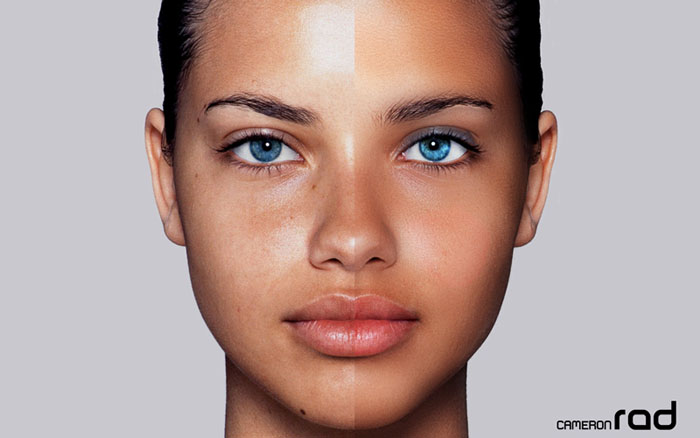Expert Guides
Smashing Magazine : 70 Beauty-Retouching Photoshop Tutorials (updated)
Smashing Magazine did compile a list of 70 Beauty-Retouching Photoshop Tutorials
Dirk Metzmacher from Smashing Magazine writes: “
Beauty retouching is probably one of the most popular application areas in which Adobe Photoshop is used extensively. There are two simple reasons for that. First, Photoshop offers a variety of advanced tools to smooth out skin and hair, optimize body proportions and emphasize some beautiful details. And second, if you have some experience with Photoshop it is easy to learn the basics and quickly produce very impressive and beautiful results.
…”
These 70 Beauty-Retouching Photoshop Tutorials show you how you can:
- Beautiful Skin
- Smooth Skin
- Beauty Retouching
- Remove Freckles
- Dark skin – bright skin
- Change Hair Color
- Remove Hair Roots
- Trimm weight
- Digital Nose Job
- Enhance Iris Color
- Whitening Teeth & Eyes
- Apply Eye Make-up
- Whitening Teeth
- Use Smart Filters
- Beautify a Face
- Phoenix Hair Effect
- Make Nails Longer
- Give Models a New look
- and many more
Podcasting
Determining the Total Number of Podcasts: How Many Are There?
Fascinated by podcasts? Find out the challenges of counting over 4.3 million podcasts and the dynamic nature of the podcasting landscape.
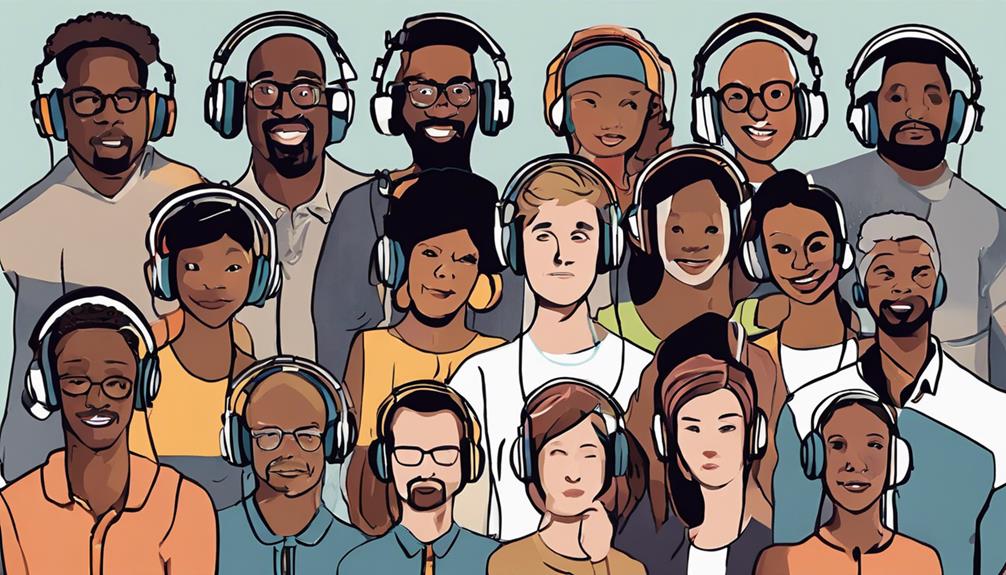
With a global count exceeding 4.3 million podcasts, the diverse podcasting landscape caters to a wide range of interests. Various estimates from platforms like ListenNotes and PodcastIndex highlight the challenges of pinpointing an exact number, showcasing the dynamic nature of podcast creation. Active podcasts, comprising 13% of the total, engage audiences and contribute fresh content regularly. The dominance of English podcasts and the emergence of formats like guest interviews add to the vibrant podcasting world. Exploring further insights from podcast growth trends and global diversity reveals the ever-evolving and fascinating domain of podcast creation.
Key Takeaways
- Total podcast estimates vary, with ListenNotes reporting 3.2 million and PodcastIndex suggesting over 4.3 million globally.
- 44% of podcasts have less than 3 episodes, while 720k have over 10 episodes, with only 156k releasing weekly.
- Active podcasts comprise 13% of the total count, indicating ongoing engagement and dedication to audience interaction.
- The pandemic in 2020 boosted podcast creation, with about 13% of podcasts currently active in the evolving landscape.
- English podcasts dominate at nearly 59%, with Spanish holding 11.5% and other languages contributing to podcast diversity.
Global Podcast Count Estimates
Global estimates suggest that the total number of podcasts worldwide surpasses 4.3 million, with varying counts from different sources. ListenNotes reports 3.2 million podcasts globally, while PodcastIndex suggests an even higher estimate.
Amplifi and Podnews reveal that 44% of podcasts have less than 3 episodes, indicating a significant portion of inactive shows. Out of the 720k podcasts with over 10 episodes, only 156k release weekly episodes, showcasing a smaller percentage of consistent content creators.
Approximately 700k active podcasts exist, with around 500k releasing episodes in 2022, demonstrating a substantial number of shows contributing to the podcasting landscape. These insights highlight the dynamic nature of the podcast industry, where creators have varying levels of engagement and consistency in producing content.
Understanding the global estimate of podcasts and the distribution of active shows can provide valuable insights for both creators and listeners seeking to navigate the diverse podcasting ecosystem.
Challenges in Counting Podcasts
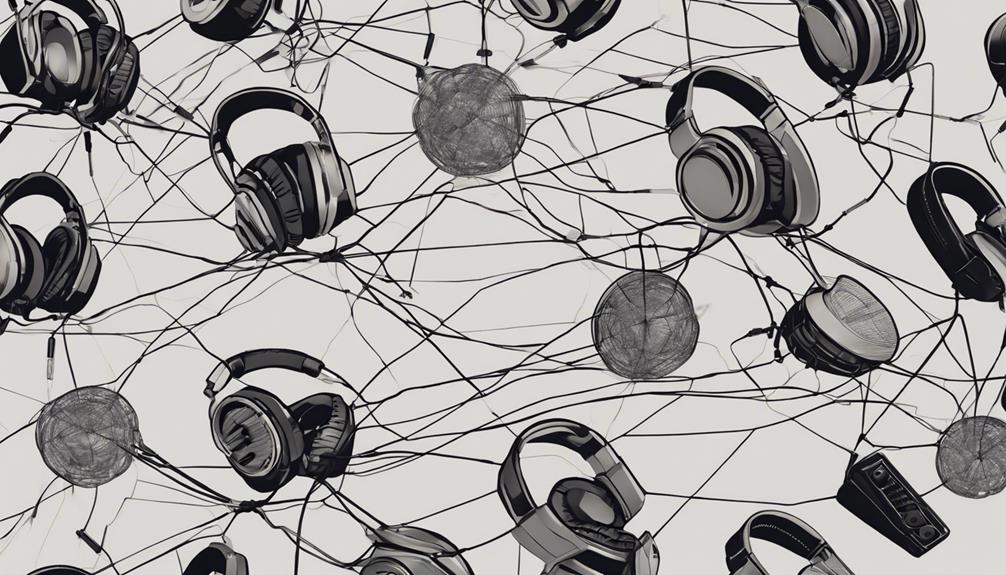
Counting podcasts presents significant challenges due to the continuous influx of new shows and the lack of standardized definitions for what qualifies as a podcast.
The number of podcasts varies depending on the source; ListenNotes reports 3.2 million podcasts, while PodcastIndex suggests over 4.3 million, indicating discrepancies in counting methods.
Additionally, data from Amplifi and Podnews reveal that 44% of podcasts have less than 3 episodes, showing the high number of short-lived shows in the podcasting domain.
Out of the 720k podcasts with over 10 episodes, only 156k release episodes weekly, emphasizing the frequency of podcast updates.
Approximately 700k active podcasts exist, with around 500k releasing episodes in 2022, illustrating the dynamic nature of the podcasting landscape.
These Podcast Statistics highlight the challenges in accurately determining the total number of podcasts worldwide, reflecting the ever-evolving and diverse nature of the podcast medium.
Range of Total Podcasts Worldwide
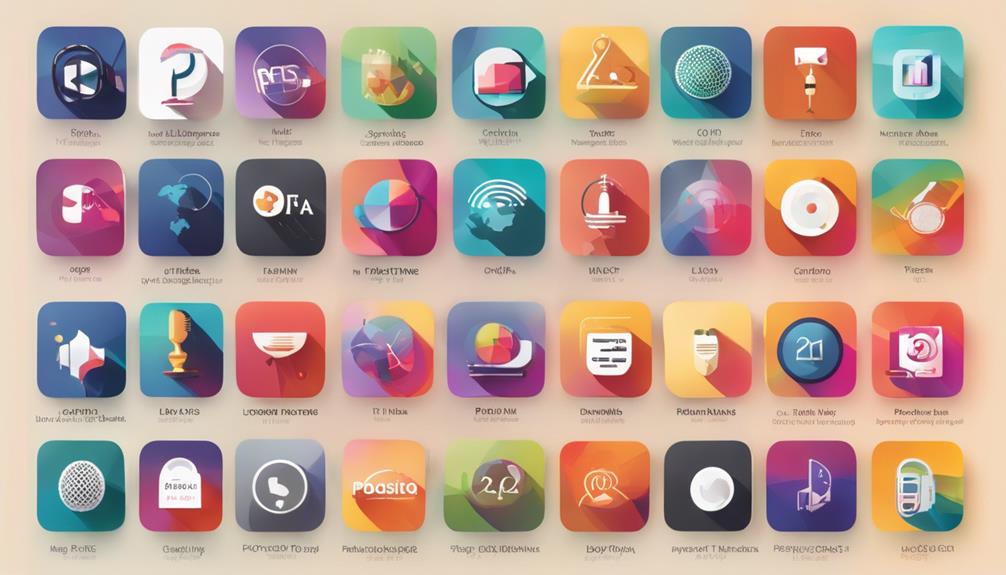
When examining the range of total podcasts worldwide, it becomes evident that the numbers vary greatly across different sources. This discrepancy sheds light on the challenge of accurately pinpointing the exact count of podcasts in existence.
Understanding the global podcast count, industry growth, and the popularity of podcasts in various regions is essential for grasping the evolving landscape of this medium.
Global Podcast Count
The total number of podcasts worldwide presents a diverse and expansive landscape, as evidenced by the varying estimates provided by industry data sources. ListenNotes reports 3.2 million podcasts globally, while PodcastIndex suggests over 4.3 million podcasts exist worldwide.
In this podcasting landscape, about 700k active podcasts currently exist, with around 500k releasing episodes in 2022. English dominates the space with 1.97 million podcasts, followed by Spanish with 365k podcasts, showcasing the global reach of podcast content in different languages.
It's fascinating to see the vast array of podcasting options available, from short-lived shows to those with a consistent release schedule. The dynamic nature of the industry highlights the continuous evolution and innovation within the podcasting sphere.
Podcast Industry Growth
Analyzing the expansive growth of the podcast industry worldwide reveals a significant range in the total number of podcasts available, reflecting the dynamic nature of this evolving medium. Estimates vary, with ListenNotes reporting 3.2 million podcasts globally and PodcastIndex suggesting over 4.3 million.
Within this vast landscape, around 700k active podcasts exist, with approximately 500k releasing episodes in 2022. English podcasts dominate the scene with 1.97 million offerings, showcasing the global reach of podcast content in different languages.
However, the podcasting landscape also faces challenges, as only 156k out of 720k podcasts with over 10 episodes maintain weekly podcast consistency. This data highlights the diverse and ever-changing nature of the podcast industry, inviting exploration and innovation in this dynamic field.
Regional Podcast Popularity
In exploring the range of total podcasts worldwide, we observe English as the dominant language, with Spanish following closely behind. English podcasts hold a significant portion of the global podcasting market, with a commanding 58.94% share, indicating the language's widespread popularity in the podcasting scene.
Spanish podcasts, while not as numerous as English ones, still claim a remarkable 11.50% of the podcast market share, showcasing a diverse podcasting industry that caters to various linguistic preferences.
The regional podcast popularity is reflective of the global podcasting market, where the US leads with 80.69% of podcasts, followed by the UK with 2.80%. This distribution highlights the dynamic and evolving nature of the podcasting market, shaping the podcast landscape on an international scale.
Significance of Active Podcasts
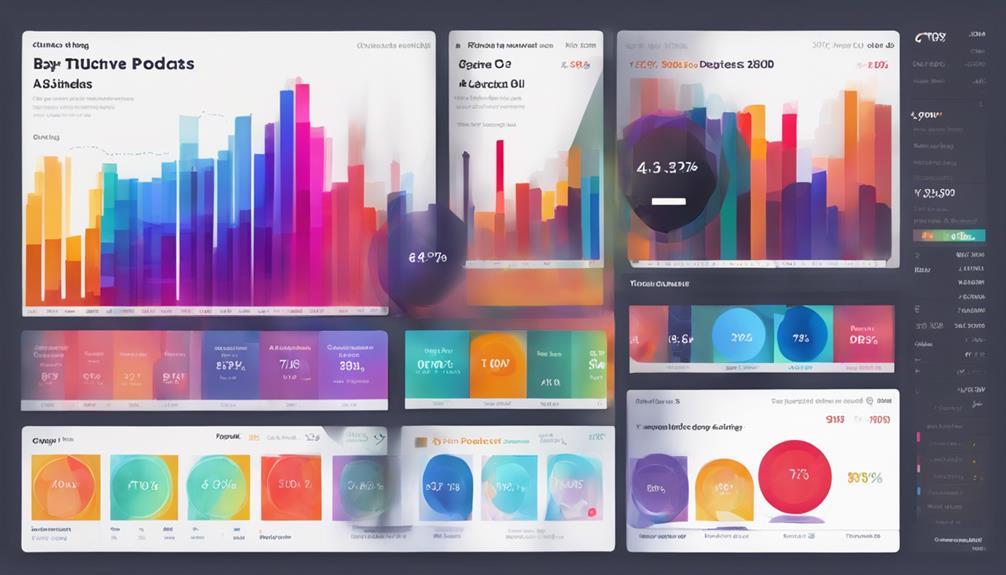
Active podcasts, comprising 13% of the total count, play an important role in shaping the vibrant podcasting landscape. With 381,000 podcasts currently active and releasing new episodes within the last 45 days, these ongoing engagements are vital for the continuous creation of diverse and rich content that caters to a wide range of audiences. The significance of active podcasts extends beyond mere numbers; it indicates a dedication to audience engagement and the constant evolution of the podcasting medium.
In today's fast-paced digital world, where innovation is key, active podcasts serve as a driving force behind the dynamic nature of the podcasting landscape. They ensure that there's a steady stream of fresh content available for listeners, contributing to the overall appeal and excitement of the podcasting experience. Additionally, the presence of active podcasts adds depth and variety to the podcasting ecosystem, offering listeners a wide array of choices and making sure that there's something for everyone in this ever-expanding audio domain.
Dynamic Podcasting Landscape
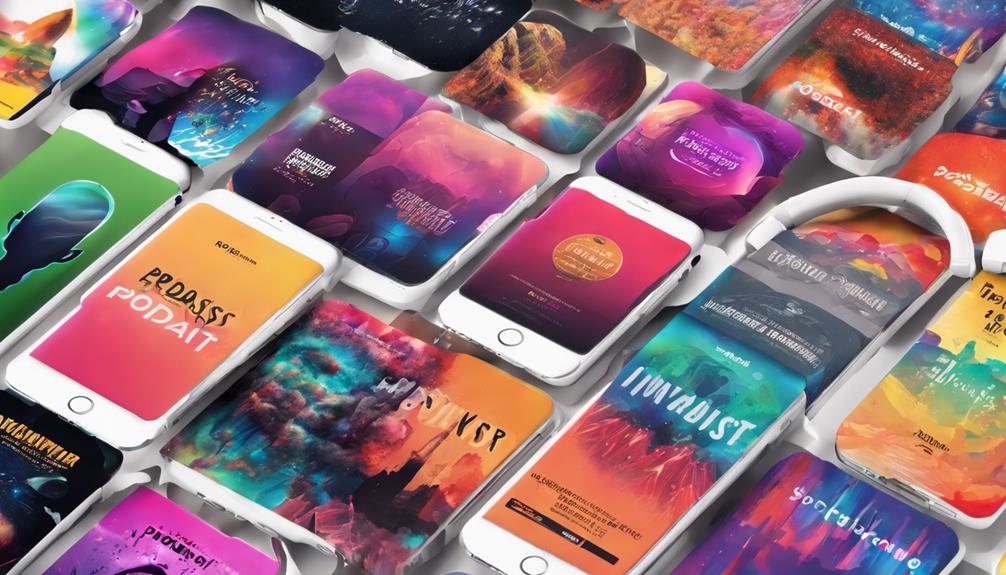
Exploring the diverse podcasting landscape reveals a vibrant world filled with millions of shows spanning various genres and languages. The dynamic nature of the podcasting landscape is evident in the varying estimates provided by platforms like ListenNotes and PodcastIndex, indicating a wide range in the total number of podcasts available.
With around 44% of podcasts having less than 3 episodes, there's a high turnover rate in podcast creation, showcasing the constant influx of new shows. Despite the large number of podcasts, only a fraction are considered active, with approximately 700k podcasts currently producing content. Within this space, English podcasts dominate, comprising 1.97 million shows, followed by Spanish with 365k podcasts, highlighting the prevalence of these languages in podcast content creation.
The challenges of consistency are apparent, as out of the 720k podcasts with over 10 episodes, only 156k release episodes on a weekly basis, indicating the hurdles many podcasts face in maintaining regular production schedules.
Growth Trends in Podcasting

Our exploration of the podcasting landscape reveals intriguing insights into the current growth trends influencing this dynamic industry.
The podcasting industry has witnessed remarkable growth, with over 2.87 million podcasts tallied as of September 2023. However, only 381k podcasts are currently active, having released a new episode in the last 45 days, showcasing the dynamic nature of podcasting. Guest interviews have emerged as a popular format, with 122k active podcasts following this trend.
The pandemic in 2020 played a pivotal role in boosting podcast creation, contributing immensely to the increasing number of podcasts available. Presently, about 13% of all podcasts are active, highlighting the vibrant and evolving landscape of podcasting. These growth trends underscore the industry's adaptability and the diverse content offerings it provides to audiences worldwide.
As podcasting continues to evolve, it remains a space ripe for innovation and creativity, attracting both creators and listeners alike.
Podcast Diversity Across Regions
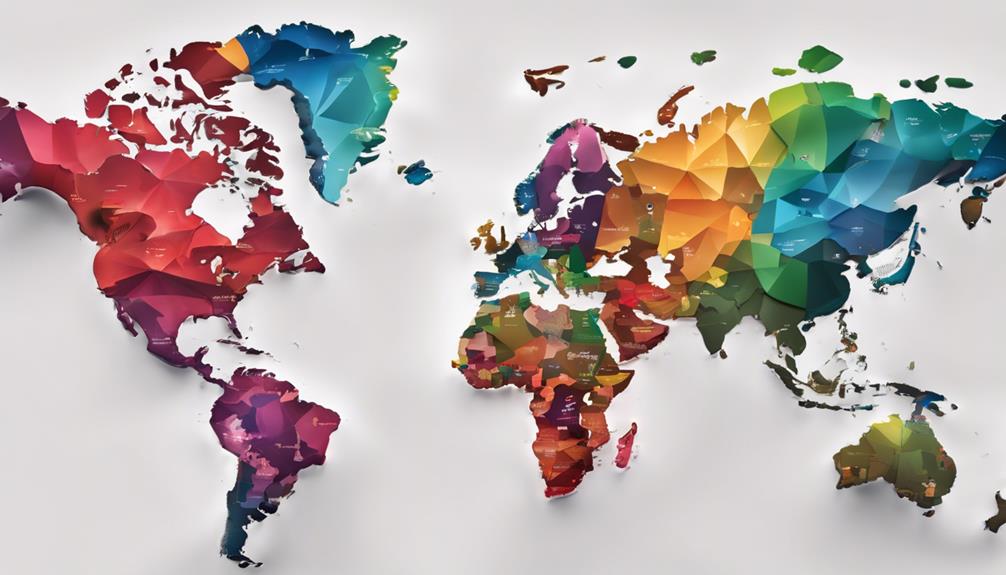
English podcasts dominate the podcasting landscape, representing nearly 59% of all podcasts and showcasing a strong global presence.
Following closely behind are Spanish podcasts, holding 11.5% of the total market share, indicating a significant following.
Additionally, Portuguese, Indonesian, and German languages contribute to the diverse podcasting scene, highlighting their international appeal.
Languages like French, Italian, and Japanese have also established strong podcast communities, enriching the global podcast content.
Various countries such as the US, the UK, Germany, Canada, and Australia host a large number of podcasts, emphasizing the widespread nature of the international podcasting industry.
This podcast diversity across regions not only offers a wide range of content but also fosters a sense of inclusivity and cultural exchange within the podcasting sphere.
The presence of different languages and regions adds depth and variety to the podcasting landscape, catering to a broad audience with diverse interests.
Vibrant Worldwide Podcast Community
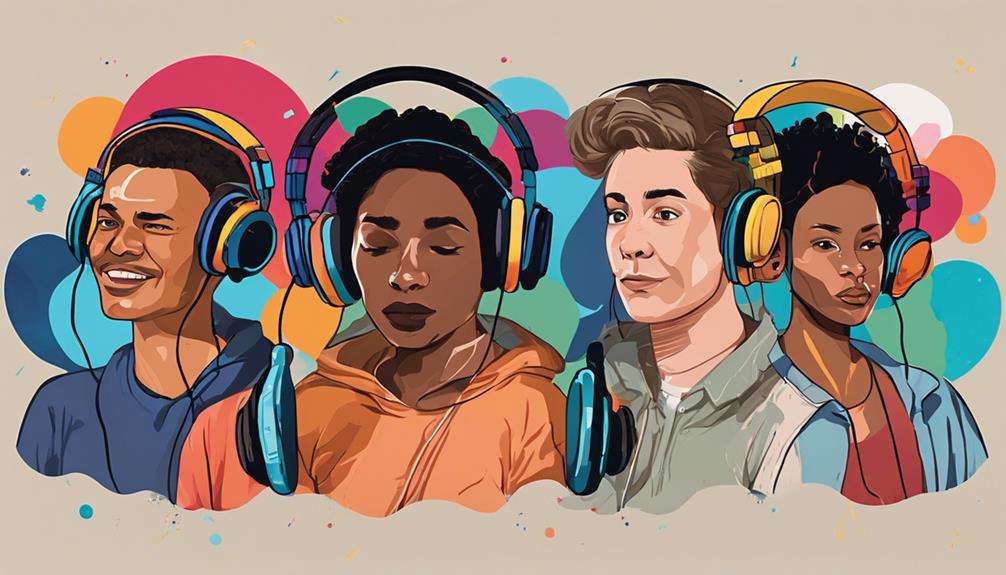
Podcast diversity across regions not only enriches the global podcast landscape but also reflects the vibrancy of the worldwide podcast community. With over 2.87 million podcasts globally, the industry boasts around 381,000 active podcasts that have released new episodes in the last 45 days.
Guest interviews stand out as a favored format, with 122,000 active podcasts utilizing this engaging style. The pandemic surge in 2020 fueled a significant increase in podcast creation, leading to a continuous rise in the total number of podcasts. Despite a slight slowdown in new show creation, the podcast landscape remains dynamic, offering a plethora of genres and languages that contribute to the global podcast industry.
This rich tapestry of content showcases the creativity and innovation present within the podcast community, making it an exciting space for both creators and listeners alike.
Frequently Asked Questions
How Many Podcasts Are Out There?
When it comes to podcasts, the number out there might surprise you. With a whopping 2.87 million podcasts in existence, we've a wide range of options to choose from. Among these podcasts, 381k are active, showing the growing popularity of this medium.
A significant 13% are currently active, with guest interviews being a favored format among 122k active podcasts. The podcast world is vast and ever-expanding, offering something for everyone.
Is There a Way to See How Many Plays a Podcast Has?
Yes, there are ways to track the number of plays a podcast has. Platforms like Spotify, iTunes, and Google Analytics offer detailed metrics on podcast plays and listeners.
These analytics tools provide valuable insights such as total plays, unique listens, streams, and listener demographics. By utilizing these platforms, podcasters can gain a better understanding of their audience and measure the success of their episodes effectively.
How Do I Get Podcast Metrics?
To get podcast metrics, we need to utilize platforms like Spotify, iTunes, and Google Analytics. These tools provide essential data on audience size, demographics, episode plays, and subscriber numbers.
Analyzing these metrics is key for tracking performance, adjusting content, attracting advertisers, and understanding listener behavior.
How Many Podcasts Make It Past 20 Episodes?
We find that many podcasts struggle to reach 20 episodes due to various challenges. Only a fraction of podcasts manage consistent weekly releases, with about 44% having fewer than 3 episodes.
Despite approximately 700k active podcasts, only around 156k release episodes weekly. This data illustrates the difficulty many podcasts encounter in maintaining audience engagement.
Producing content consistently remains a significant hurdle for the majority of podcasts.
Conclusion
To sum up, the total number of podcasts worldwide remains a mystery, with estimates varying widely. Despite efforts to count them all, the ever-evolving nature of the podcasting landscape makes it a challenging task.
So, while we may never know the exact number, one thing is certain: the world of podcasts continues to grow and thrive, offering a diverse range of content for listeners everywhere.
Podcasting
Do Podcasts Pay Their Guests?
Navigate the world of podcasting to uncover whether guests are paid, revealing insights that can shape your podcasting journey.

In the podcasting world, guests may or may not receive payment. While high-profile guests can demand significant fees, others may appear without any financial compensation. Payment practices vary widely, influenced by factors like budget and guest prominence. Some podcasts do charge fees to their guests, but it's not universal. Understanding these industry norms is important for both guests and hosts, as it impacts the dynamics of the podcasting landscape. The decision to compensate guests financially plays a strategic role in content creation and industry relationships. Stay tuned for more insights into the evolving world of podcast guesting.
Key Takeaways
- Podcasts generally do not pay guests, relying on mutual benefits.
- Some high-profile guests may command substantial fees for appearances.
- Payment practices vary widely in the podcasting industry.
- Financial compensation can be a substitute for traditional advertising costs.
- Guest payment trends range from no payment to fees up to $50,000.
Payment Practices in Podcasting
In podcasting, guests typically don't receive payment for their appearances on shows. While some high-profile guests may command substantial fees, ranging from $20,000 to $50,000 for certain appearances, the majority of guests participate without monetary compensation. Occasionally, smaller podcasts may request minimal payments, usually a few hundred dollars at most, from guests. However, it's important to note that payment practices in podcasting vary widely, with the norm being guests appearing on shows without receiving any financial compensation.
The landscape of podcasting is diverse, with creators, guests, and audiences exploring the world of content creation in innovative ways. The decision to offer payment to guests is often influenced by factors such as the show's budget, the guest's prominence, and the mutually beneficial nature of the collaboration. This fluidity in payment practices underscores the dynamic nature of podcasting as a platform for authentic conversations and valuable content creation.
Financial Compensation for Guests

Guest payment practices vary widely in the podcasting industry. Some guests charge as much as $50,000 for an interview. This financial compensation can act as a filtering tool for podcast hosts and can also be a substitute for traditional advertising costs.
Understanding these industry norms is important for both podcast guests and hosts maneuvering the landscape of paid promotions in podcasts.
Guest Payment Practices
Rarely do podcasts compensate their guests financially, although some high-profile individuals may negotiate payment for their appearances. In the podcasting world, guest payment practices vary widely, with some interesting insights to ponder:
- Financial compensation is uncommon, but high-profile guests may request payment.
- Some podcasts charge substantial fees to guests for appearances.
- Payment arrangements can influence the dynamics within the podcast industry.
- Lack of transparency about paid appearances can harm trust in media.
- Strategic financial decisions by guests can impact content creation and credibility.
Industry Norms
Discussing financial compensation for podcast guests in the industry reveals a wide range of practices and norms. Some podcasts choose not to pay their guests, viewing the experience as mutually beneficial. However, there are instances where popular shows charge substantial fees, ranging from $20,000 to $50,000, for guest appearances. On the other hand, smaller podcasts may occasionally request modest payments, usually around a few hundred dollars at most. The majority of podcast guests typically appear without financial compensation, especially on newer shows, as the value lies in the exposure and networking opportunities provided. Below is a table summarizing the diverse payment practices in the podcast industry.
| Payment Practice | Description |
|---|---|
| Guests not paid | Considered mutually beneficial |
| Popular podcasts | Charge fees ($20,000 – $50,000) |
| Smaller shows | Occasional minimal payments |
| Majority of guests | Appear without compensation |
Guest Payment in Podcast Industry
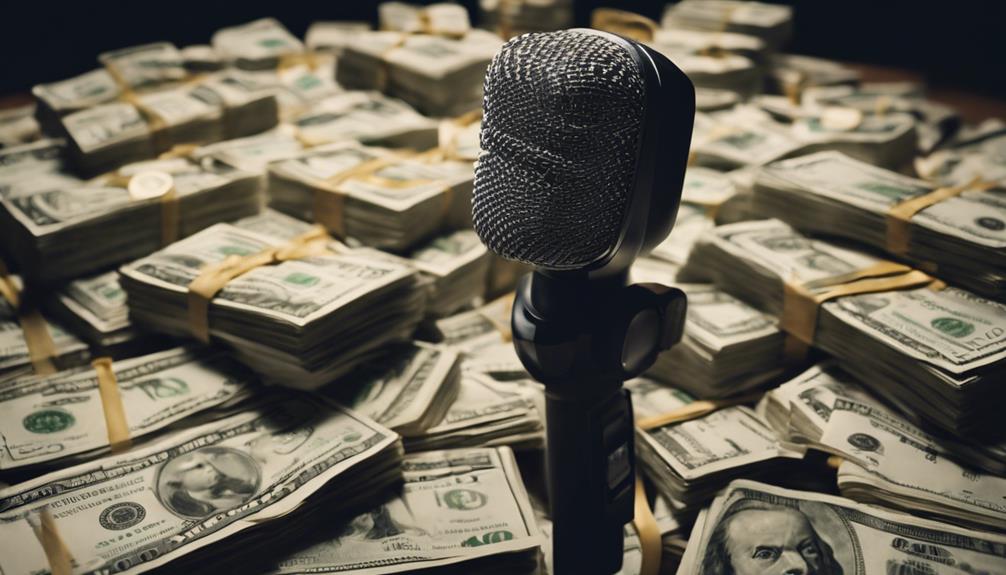
Guest payment trends in the podcast industry are evolving rapidly, with some podcasts charging significant fees for guest appearances. The ethics surrounding guest payment have sparked debates about transparency and credibility within the podcasting landscape.
Understanding the impact of guest payment on content creation and the overall podcasting ecosystem is vital for both podcasters and listeners.
Guest Compensation Trends
In the rapidly evolving podcast industry, a growing number of guests are opting to pay significant amounts for appearances on popular shows. This trend reflects the increasing value placed on exposure and credibility in the digital sphere. Some notable points to ponder regarding guest compensation trends include:
- Some guests pay up to $50,000 for interviews, particularly in business, cryptocurrency, and wellness genres.
- Examples like Dave Asprey and The Skinny Confidential Him and Her charge substantial amounts for appearances.
- Certain podcasts set varying fees for guest appearances, with rates ranging from $3,500 to $15,000.
- Paid guest appearances can act as alternatives to traditional advertising costs in the podcast industry.
- The utilization of paid promotions in podcasts raises concerns about trust, transparency, and oversight.
Ethics of Guest Payment
With the rise of guest payments in the podcast industry, ethical considerations surrounding the practice come to the forefront. Paid appearances, especially without disclosure, can erode trust in media. Instances like Dave Asprey charging $50,000 per appearance for only 1% of his episodes highlight the potential harm to credibility.
Unlike traditional media with clear guidelines on sponsored content, the podcast industry lacks oversight in this area. Payments for podcast appearances can influence the financial dynamics of podcasting, acting as a filtering tool or a substitute for traditional ad costs.
This trend mirrors the influencer industry's use of paid promotions, emphasizing the importance of transparency and trust to maintain credibility with audiences.
Impact on Podcasting Landscape
The increasing prevalence of paid guest appearances in the podcast industry is reshaping the landscape of podcasting and raising questions about credibility and transparency. This shift has the potential to erode trust in the medium and impact how audiences perceive podcast content.
Some key points to take into account include:
- Paid guest appearances range from $20,000 to $50,000, particularly common in genres like business and wellness podcasts.
- Lack of disclosure regarding paid appearances can harm trust in media and affect the credibility of podcasts.
- Payments for guest spots can act as a filtering mechanism and substitute for traditional advertising costs.
- The podcast industry is adopting practices similar to the influencer industry, creating a new business model for podcasters and guests.
- Transparency about payments and clear communication with audiences are essential for maintaining trust and credibility in the podcasting landscape.
Monetization of Guest Appearances

Guest appearances on podcasts have increasingly become a monetization strategy for both hosts and guests. Podcasts charging guests fees for appearances can range from $3,500 to $50,000, with popular genres like business, cryptocurrency, and wellness leading the way. However, lack of disclosure about paid appearances may harm trust in media and podcasting. Paid appearances can act as a filtering tool or substitute for traditional advertising costs, impacting the financial dynamics in podcasting greatly. To illustrate the varying monetization methods, consider the following table:
| Monetization Method | Description | Impact |
|---|---|---|
| Flat Fee | Guests pay a fixed amount for appearing on the podcast | Guarantees revenue upfront |
| Revenue Sharing | Guests receive a percentage of the podcast's earnings | Incentivizes promotion |
| Sponsorship Integration | Guests promote a sponsor's product during their appearance on the podcast | Aligns incentives |
These methods showcase the diverse ways in which podcasts are monetizing guest appearances to sustain and grow their platforms.
Guest Remuneration in Podcasts
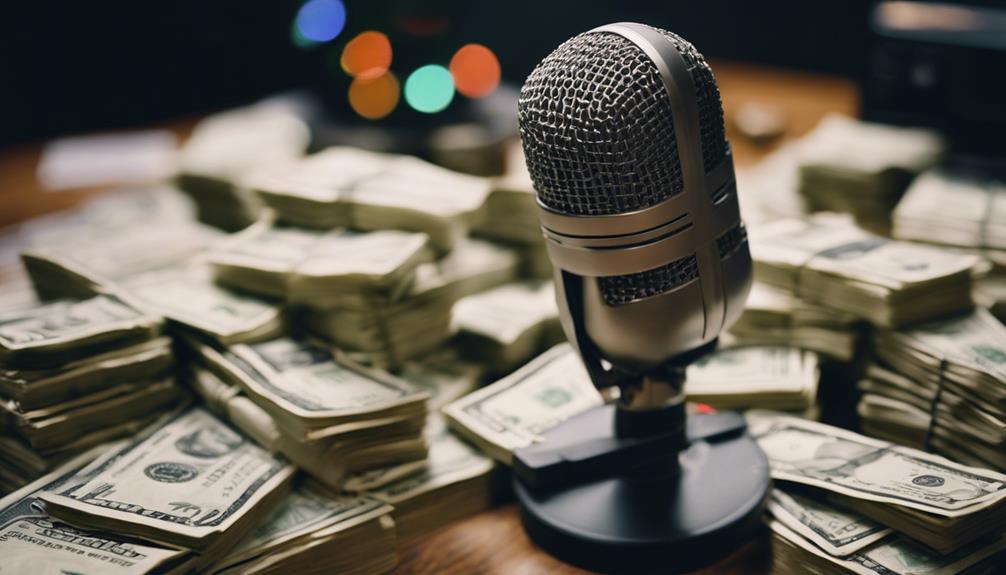
Shifting from the monetization of guest appearances, the podcasting landscape reveals a dynamic system of guest remuneration that influences industry trust and financial strategies. Podcast guests appear to be paying a range of fees for their appearances, with some shelling out as much as $50,000 for interviews on popular shows. This practice of paid guest appearances can lead to various implications within the podcasting industry:
- Varied Costs: Charges for podcast appearances can range from $3,500 to $50,000, showcasing the flexibility in pricing strategies.
- Promotional Strategy: Payments by guests can serve as a form of advertising or promotional strategy, benefiting both the guest and the podcaster.
- Trust Concerns: Lack of disclosure about paid appearances can harm trust in the podcast industry, highlighting the importance of transparency.
- Business Model: Paid guest appearances can be a viable business model for both podcasters and guests, creating new avenues for revenue generation and collaboration.
- Financial Impact: The financial aspects of guest remuneration play a significant role in shaping the podcasting landscape, driving innovation and strategic decision-making.
Compensating Podcast Guests

Discussing the compensation of podcast guests reveals the diverse approaches taken within the industry to acknowledge their contributions. While most podcast guests do not receive monetary payment, they often value exposure as a form of compensation. Tight budgets in podcasting frequently lead to the absence of payment for guests, emphasizing the importance of exposure over financial rewards. Paying guests can sometimes impact the authenticity of a podcast, shifting the focus towards mutual benefits and value exchange.
| Alternative Forms of Compensation | Description | Benefits |
|---|---|---|
| Brand Promotion | Allowing guests to promote their brand during the podcast episode | Increased brand visibility and recognition |
| Social Media Promotion | Offering guests promotion on social media platforms | Expanded reach and audience engagement |
| Collaboration Opportunities | Providing opportunities for future collaborations between guests and podcast hosts | Potential for long-term partnerships |
Guest Fees in Podcasting

Acknowledging the financial dynamics in podcasting, the emergence of guest fees has become a notable aspect within the industry, particularly in genres like business, cryptocurrency, and wellness podcasts.
- Some podcasts charge substantial fees ranging from $3,500 to $50,000 for guest appearances.
- Popular genres such as business, cryptocurrency, and wellness podcasts often require these fees.
- Lack of transparency about paid appearances can damage trust in media and compromise credibility.
- Paid appearances can act as a filter for podcast hosts, helping them select guests strategically.
- Guest fees sometimes serve as an alternative to traditional advertising costs for podcasters, impacting their content creation and business models.
In this landscape, where podcast hosts seek innovative ways to engage with guests and listeners, the introduction of guest fees reshapes how individuals and businesses interact and appear on podcasts. The financial considerations in podcasting continue to evolve, influencing the dynamics between hosts, guests, and the content they produce.
Economics of Podcast Guesting
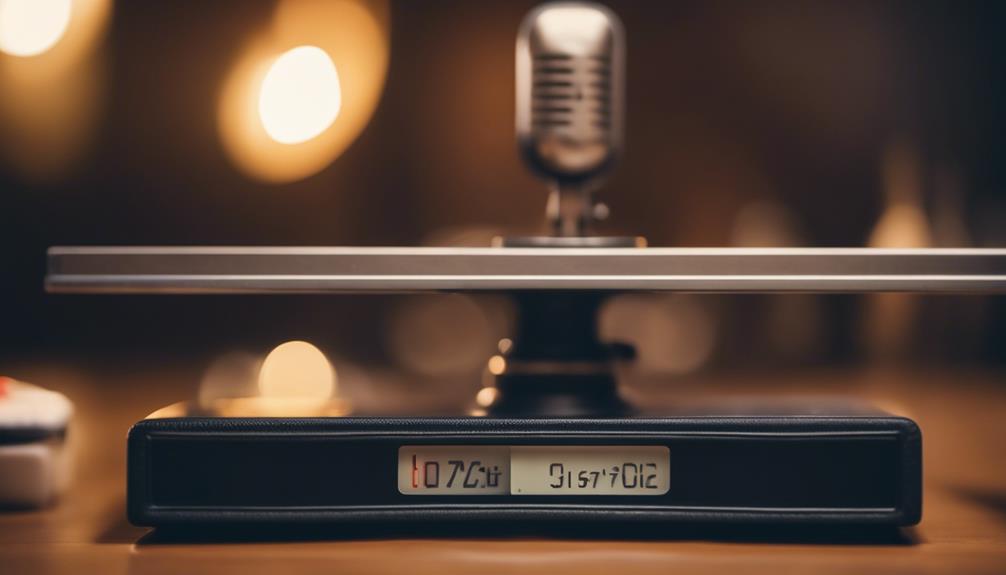
When considering the economics of podcast guesting, it's essential to evaluate guest payment considerations, potential monetization opportunities for guests, and industry standard practices.
These points shed light on the financial aspect of appearing on podcasts, offering insights into how guests can benefit financially from their appearances.
Understanding these aspects can help both guests and podcast hosts navigate the evolving landscape of guest payments in the podcasting industry.
Guest Payment Considerations
In the world of podcast guesting, the economics surrounding guest payments vary greatly, with some guests shelling out substantial amounts, such as up to $50,000, for the opportunity to appear on certain popular shows.
- Some guests pay up to $50,000 for an interview.
- Dave Asprey charges $50,000 per appearance for 1% of his podcast episodes.
- The Skinny Confidential Him and Her podcast charges $20,000 to $40,000 per interview.
- Entrepreneurs on Fire charges $3,500 for a guest appearance.
- Boxer Manny Pacquiao charges $15,000 for appearing on a podcast.
These diverse payment practices showcase the wide range of compensation expectations in the podcasting world.
Monetization Opportunities for Guests
Exploring the various monetization opportunities available for podcast guests reveals a spectrum of payment structures within the industry. From guests paying up to $50,000 for an interview in popular genres like business and wellness, to podcast hosts charging anywhere from $3,500 to $50,000 per appearance, the landscape of payment options is diverse.
This range illustrates the evolving nature of podcast monetization opportunities, showcasing how guests can leverage their expertise and influence for financial gain. As the podcasting industry continues to grow, these payment structures provide guests with a platform to not only share their insights but also profit from their appearances.
Understanding these monetization opportunities can empower guests to navigate the podcasting world strategically and lucratively.
Industry Standard Practices
As podcast guests, we often find ourselves navigating through the industry's standard practices when it comes to the economics of guesting. When it comes to making money from podcast appearances, the landscape can be diverse and dynamic. Here are some key points to take into account:
- Most podcast guests don't get paid for their appearances, aligning with industry norms.
- Payment for guests is rare, especially for new podcasters operating on limited budgets.
- High-profile guests may forego payment if the podcast boasts a substantial audience.
- Payment is generally not expected, given the mutual benefits of exposure for both parties.
- Financial arrangements can vary, with some guests opting to charge fees for their appearances.
Guest Payments in Podcasting
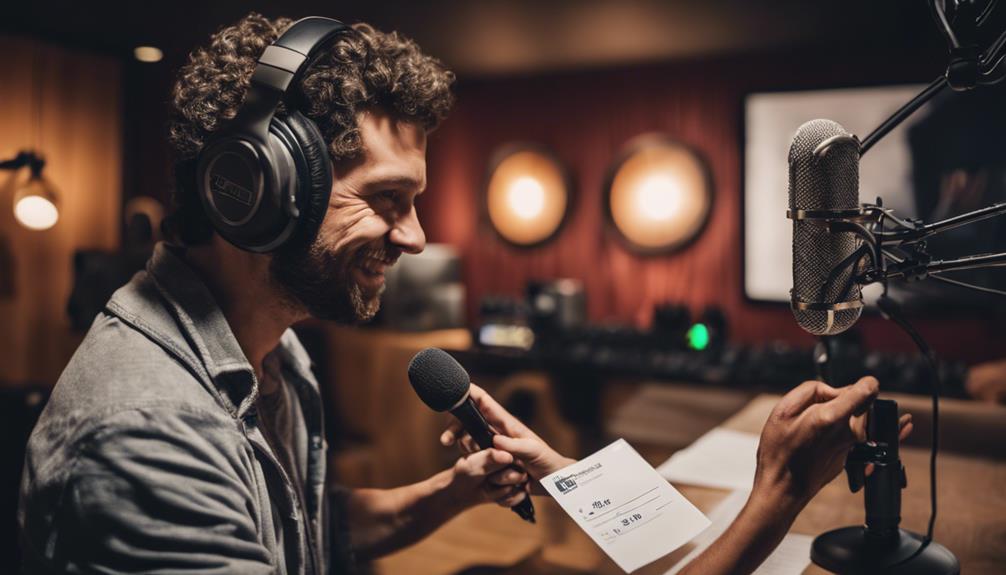
Guest payments in the podcasting industry vary widely, with some guests receiving substantial fees while many others appear without financial compensation. The landscape of guest payments in podcasts is diverse, ranging from high fees demanded by popular shows to minimal payments requested by smaller podcasts. Here's a snapshot of the varied guest payment scenarios:
| Podcast Size | Guest Payment Range |
|---|---|
| Popular Podcasts | $20,000 – $50,000 |
| Mid-tier Podcasts | $500 – $5,000 |
| Small Podcasts | Minimal payments |
In this dynamic industry, the compensation for guest appearances can be sporadic due to the sheer number of podcasts worldwide. Despite the lack of monetary incentives for many guests, the allure of mutual benefits and exposure continues to drive individuals to participate in podcasts. The evolving landscape of guest payments showcases the innovative nature of the podcasting domain, where opportunities for both hosts and guests abound beyond traditional financial transactions.
Money and Podcast Guesting

Money plays a significant role in the world of podcast guesting, influencing the dynamics of guest appearances and industry practices. When it comes to being paid to appear on podcasts, the landscape can vary greatly, with some guests even shelling out substantial amounts for the opportunity to record a podcast.
Here are some key points to ponder:
- Some podcast guests pay up to $50,000 for an interview, particularly in genres like business, cryptocurrency, and wellness.
- Popular podcasts like The Skinny Confidential Him and Her charge $20,000 to $40,000 per interview.
- The Entrepreneurs on Fire podcast charges $3,500 for a guest appearance.
- Boxer Manny Pacquiao charges $15,000 for appearing on a podcast.
- Paid podcast appearances can serve as a filtering tool or substitute for traditional advertising costs in the industry.
These examples showcase the diverse ways in which money intersects with the world of podcast guesting, highlighting the evolving nature of this practice.
Frequently Asked Questions
Does It Cost Money to Be a Guest on a Podcast?
It may or may not cost money to be a guest on a podcast. Some podcasts charge fees for guest appearances, while others do not. The decision typically depends on the podcast's niche, popularity, and business model.
Being aware of potential costs associated with podcast appearances is essential when considering guest opportunities. Understanding the landscape of podcasting can help individuals make informed choices about participation.
How Many Listeners Do You Need to Make Money on a Podcast?
To make money on a podcast, you typically need thousands of listeners per episode. Monetization options like ads, sponsorships, and donations require a sizable audience. Generally, you may need at least 5,000 to 10,000 downloads per episode to start generating revenue.
The number of listeners directly impacts potential earnings from advertising and sponsorship deals. Growing your listener base is essential for increasing revenue opportunities in podcasting.
Who Pays You When You Have a Podcast?
When you have a podcast, advertisers, sponsors, or listeners can support you financially. Ad revenue, sponsorships, and listener donations are common ways podcast creators generate income.
Advertisers pay to promote their products or services to your audience, while sponsors provide financial support in exchange for exposure.
Listener donations through platforms like Patreon or direct contributions can also contribute to your podcast's revenue stream.
How Much Do Guests Get Paid on Joe Rogan?
We don't receive payment for appearing on Joe Rogan's podcast. The value lies in the exposure and audience growth it offers. While Joe Rogan doesn't pay guests, the platform provides a unique opportunity to reach a diverse audience.
Revenue for the podcast comes from sponsorships and ads, not guest payments. Being a guest on Joe Rogan's show can lead to significant visibility and engagement with a broad range of listeners.
Conclusion
To sum up, while many podcasts don't pay their guests, it's essential to acknowledge that some do provide financial compensation.
According to a recent survey, only 35% of podcasts offer payment to their guests. This statistic underscores the need for transparency and fair compensation practices in the podcasting industry.
As the medium continues to grow in popularity, hosts must recognize the value that guests bring to their shows and compensate them accordingly.
Expert Guides
Download Music to My Phone: Ultimate Guide
Discover the best ways to download music to your phone and enhance your music experience with expert tips and detailed instructions.

When downloading music to our phones, we can choose from purchased downloads on platforms like iTunes, free music from sites like SoundCloud, or subscriptions like Spotify. Understanding copyright laws is important to avoid piracy and respect artists' rights. Before downloading, check your phone's storage, compatible file formats, and internet connection. Select an app with a wide music range, offline listening, and user-friendly interface. Explore music streaming services like Spotify or Apple Music that offer vast libraries and offline listening. For detailed steps and FAQs, the ultimate guide provides detailed information to enhance your music experience.
Key Takeaways
- Choose reputable music download apps for legal and convenient access.
- Ensure your phone supports file formats like MP3 and FLAC.
- Use reliable sources like Amazon Music or Pandora for legal downloads.
- Build a personalized music library tailored to your taste.
- Enjoy offline listening without an internet connection through trusted services.
Types of Music Downloads
When it comes to acquiring music for your phone, there are various methods of obtaining digital music files, each offering distinct advantages and considerations.
Download songs can be obtained through different avenues such as purchased downloads, free downloads, and subscription-based downloads. Purchased downloads allow users to buy individual songs or albums from online stores like iTunes or Google Play Music for permanent ownership. On the other hand, free downloads are available on platforms like SoundCloud or Jamendo, offering legal and cost-free music options. Subscription-based downloads provide access to extensive music libraries through services like Spotify or Apple Music for a monthly fee.
Additionally, there are options to download music from legal sources using free apps or engage in music streaming services. These methods offer convenience and a wide selection of music choices for users looking to expand their music libraries.
Whether you prefer to own your music or access a vast array of songs through a subscription, the world of digital music downloads provides a variety of ways to enjoy your favorite tunes on the go.
Legal Considerations
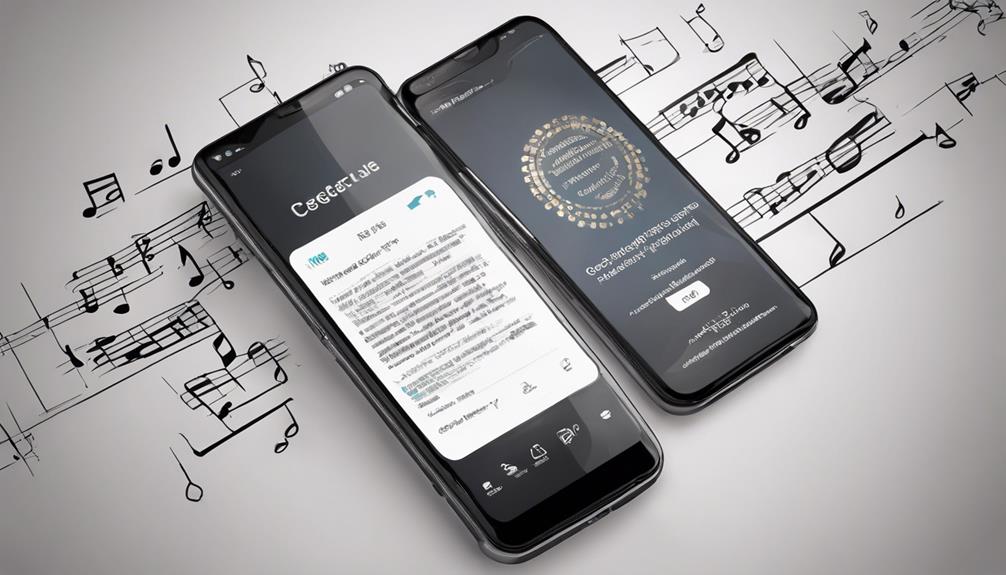
When downloading music to your phone, it's important to take into account the legal aspects. Understanding copyright laws, fair use guidelines, and the differences between streaming and downloading are key points to keep in mind.
Copyright Laws Overview
Copyright laws play an essential role in protecting the rights of music creators by regulating the use and distribution of their work. When downloading music, it's vital to adhere to these laws to respect musicians' intellectual property. Here are some key points to keep in mind:
- Understand licensing terms to guarantee compliance with copyright laws.
- Avoid piracy to uphold artists' rights and protect their work.
- Always check the usage rights of music downloads for legal use.
- Be mindful of DRM-protected downloads, which may have usage restrictions.
Fair Use Guidelines
Exploring the fair use guidelines provides insight into legal considerations when downloading music to your phone. It's essential to adhere to these guidelines to guarantee compliance with copyright laws and licensing agreements.
By downloading music from legal sources, you can enjoy offline listening without risking legal repercussions. Remember to check the usage rights of your downloads and respect artists' rights to avoid piracy issues.
Be cautious of DRM-protected downloads that may limit how you interact with your music collection. Staying informed about these legal aspects will help you build a music library ethically and responsibly.
Prioritize understanding fair use guidelines to navigate the complexities of downloading music while respecting the legal framework that governs it.
Streaming Vs. Downloading
Comparing streaming and downloading music highlights the distinctions in ownership rights and legal considerations for music consumption in today's digital landscape.
- Streaming music offers temporary access, while downloading provides permanent ownership.
- When streaming, users typically receive a license, whereas downloading may involve purchasing with ownership rights.
- Legal considerations for streaming include platform terms, while downloading involves copyright laws.
- Services like Spotify offer vast libraries for monthly fees, while downloading can include one-time purchases or subscription-based downloads with DRM protection.
Understanding the differences between streaming and downloading is essential for managing ownership, usage rights, and compliance with copyright laws, ensuring a legal and enjoyable music experience.
Preparing Your Device

Before downloading music to our phones, it's crucial to properly prepare our devices to guarantee a seamless experience. Start by checking your phone's storage capacity to guarantee sufficient space for music downloads. If needed, consider using a microSD card to expand storage for more music.
Verify that your phone supports file formats like MP3, AAC, WAV, or FLAC for playing downloaded music without compatibility issues. Additionally, confirm you have a stable internet connection for smooth and uninterrupted music downloads to your device.
Adequate preparation is key to enjoying a hassle-free music downloading process. By addressing aspects such as storage, file formats, and connectivity beforehand, you can optimize your device for a seamless music experience.
Get ready to enhance your music library with these preparation steps before delving into the world of music downloads on your phone.
Choosing a Music Download App

To enhance your music listening experience on your phone, we should carefully select a music download app that suits our preferences and requirements. When choosing a music download app, consider the following factors:
- Features and Music Selection: Look for apps like Spotify that offer a wide range of music genres and artists to cater to different tastes.
- Offline Listening: Make sure the app allows you to download music for offline listening, perfect for times when you're on-the-go without internet access.
- User-Friendly Interface: Opt for an app with a user-friendly interface and easy navigation, making it effortless to browse and download music.
- Efficient Download Speeds: Evaluate the app's download speeds to enjoy a seamless experience without long waits for your favorite tunes.
Using Music Streaming Services

We all enjoy listening to music, and with top music streaming platforms like Spotify and Apple Music, we've access to millions of songs at our fingertips. These services offer personalized music recommendations based on our preferences, ensuring we discover new tracks that resonate with us.
The convenience of downloading songs for offline listening and enjoying ad-free music makes streaming services a popular choice for music lovers.
Top Music Streaming Platforms
Among the top music streaming platforms available, Spotify stands out as a leading service offering users over 70 million tracks to enjoy. When considering music streaming services, here are some other top contenders to explore:
- Apple Music provides a vast library of 75 million songs along with exclusive content and radio shows.
- YouTube Music features official music videos, covers, remixes, and live performances in addition to audio tracks.
- Amazon Music Unlimited boasts a catalog of over 70 million songs and includes a variety of curated playlists for different moods and genres.
- Tidal differentiates itself by offering high-fidelity music streaming with its HiFi subscription tier, providing lossless audio quality.
These platforms cater to various preferences, ensuring a diverse range of music options for users.
Benefits of Streaming
Streaming music services offer a convenient way to access a vast library of songs and enjoy ad-free listening with high-quality audio. With platforms like Spotify boasting over 70 million songs, users can create personalized playlists tailored to their preferences, expanding their musical horizons through curated playlists and recommendations.
The seamless experience extends to offline listening, allowing downloads for on-the-go music enjoyment without needing an internet connection. Embrace the innovation of streaming services to immerse yourself in a world of music, where every beat and melody is at your fingertips, providing an unparalleled listening experience.
Enjoy the freedom to explore, discover, and tailor your music journey with the diverse features these platforms offer.
Personalized Music Recommendations
Immerse yourself in a world of personalized music recommendations by leveraging the advanced algorithms of music streaming services like Spotify. Here's how these services enhance your music discovery:
- Spotify analyzes your listening habits to offer personalized recommendations tailored to your tastes.
- Factors like genre preferences, listening history, and user-generated playlists are considered for accurate suggestions.
- Explore curated playlists and recommended tracks to discover new artists and expand your music library effortlessly.
- Engage with similar artists and recommended content to enhance your music discovery journey and easily find new favorites.
With personalized recommendations, music streaming services revolutionize how you explore and enjoy music, making it easier to discover new sounds that resonate with your unique preferences.
Transferring Music From a Computer

To move music from your computer to your phone, simply connect both devices with a USB cable and switch your phone to file transfer mode. Make sure your music files are in compatible formats such as MP3, AAC, WAV, or FLAC to play smoothly on your Android device. If you prefer a wireless option, consider using cloud storage services like Google Drive or Dropbox to upload music from your computer and access it on your phone hassle-free.
For a direct transfer, employ file transfer programs like Android File Transfer for Mac or Windows Explorer for Windows to efficiently move music files between your devices. Once the music is on your phone, organize it for easy access using music player apps or default media players available on your device. Stay organized and enjoy your favorite tunes on the go with these simple steps.
Downloading Music Directly to Phone

When downloading music directly to your phone, consider using reputable music download apps for a convenient and personalized library. Here are some tips for a seamless experience:
- Access Music Offline: Enjoy your favorite tunes without needing an internet connection by downloading music directly to your phone.
- Use Reliable Apps or Web Browsers: Opt for trusted music download apps or web browsers to save music files directly on your device.
- Personalized Music Library: Build a collection tailored to your taste by selecting and downloading songs directly to your phone.
- No Dependence on Streaming Services: By downloading music, you can listen to tracks without relying on streaming services, giving you more control over your listening experience.
Downloading music directly to your phone offers the flexibility to enjoy your music offline and curate a library that suits your preferences. Confirm compatibility with your phone's file formats for a seamless listening experience.
Frequently Asked Questions
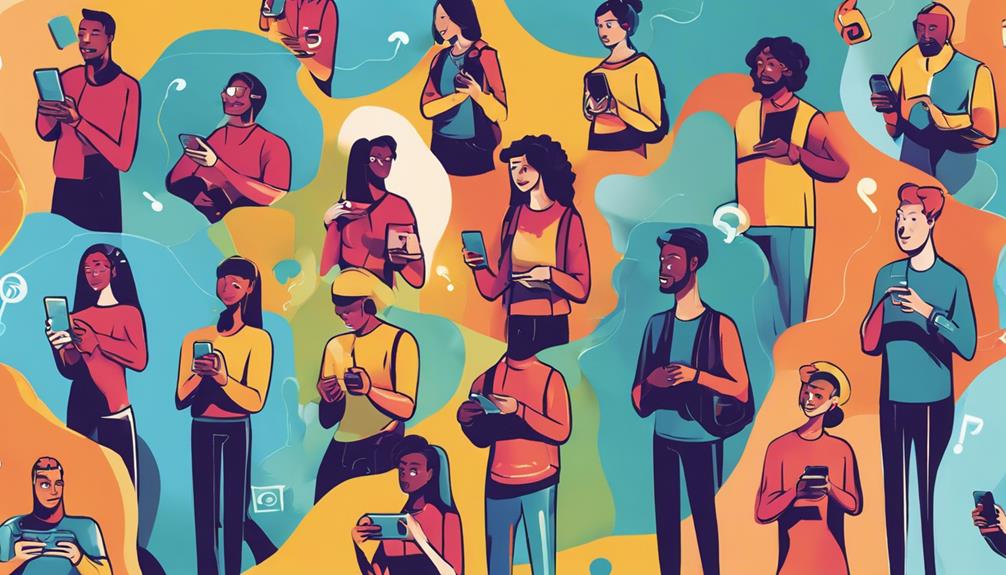
Let's explore the most common queries about downloading music directly to your phone. When it comes to getting music on your device, one popular question is how to download music for free legally. Apps like Amazon Music, Pandora, and SoundCloud offer legitimate ways to download music without breaking any rules.
If you prefer a vast music library, subscription-based services like Spotify and Apple Music are excellent options. To download music directly to your phone, consider using web browsers or apps like Music Download Paradise. Before downloading, make sure your phone supports file formats like MP3, AAC, WAV, and FLAC.
Creating personalized playlists can enhance your music experience, allowing you to enjoy your favorite tunes offline. So, if you're wondering about the best apps, legal downloads, or how to access music offline, these FAQs can guide you through the process. Happy downloading!
Frequently Asked Questions
How Can I Download Music Directly to My Phone?
To download music directly to your phone, we recommend using music download apps like Music Download Paradise. These apps allow you to search for songs by title, artist, or album, making it easy to access a wide range of music.
Once downloaded, the songs are stored in the app's Library tab for offline listening. Enjoy your music without needing an internet connection.
The simple interface and easy navigation make downloading and playing songs straightforward.
How Do I Download a Music Album to My Phone?
To download a music album to our phone, we search for it on a music app or website. After selecting the album, we check for download options and click on the provided button.
We monitor the download progress until the album is fully downloaded to our phone. Finally, we access the album in our music library for offline listening.
Following these steps guarantees a smooth process of downloading music to our phone.
How Do I Put Music on My Smartphone?
When putting music on our smartphone, we can use apps like Music Download Paradise to easily search for and download songs directly to our device. By searching for song titles, artist names, or albums within the app, we can explore a wide range of music options.
After downloading, we can enjoy offline listening by accessing the songs in the app's Library tab. The user-friendly interface simplifies finding, downloading, and playing music on our smartphone hassle-free.
How to Download Free Songs?
When it comes to downloading free songs, we've everything you need! Utilize apps like Music Download Paradise to access a vast library of tunes at no cost.
Simply search for your favorite songs, artists, or albums, then download them for offline listening. With a user-friendly interface, this method is perfect for expanding your music collection without breaking the bank.
Enjoy the convenience and variety of free music downloads with ease!
Conclusion
To sum up, when downloading music to our phones, it can be a fun and convenient way to enjoy our favorite tunes on the go. Keep in mind the legalities, prepare your device, and choose the right app for your needs.
Whether you prefer streaming services or transferring music from your computer, there are plenty of options available. So go ahead, rock out to your favorite songs wherever you are, and stay groovy!
-
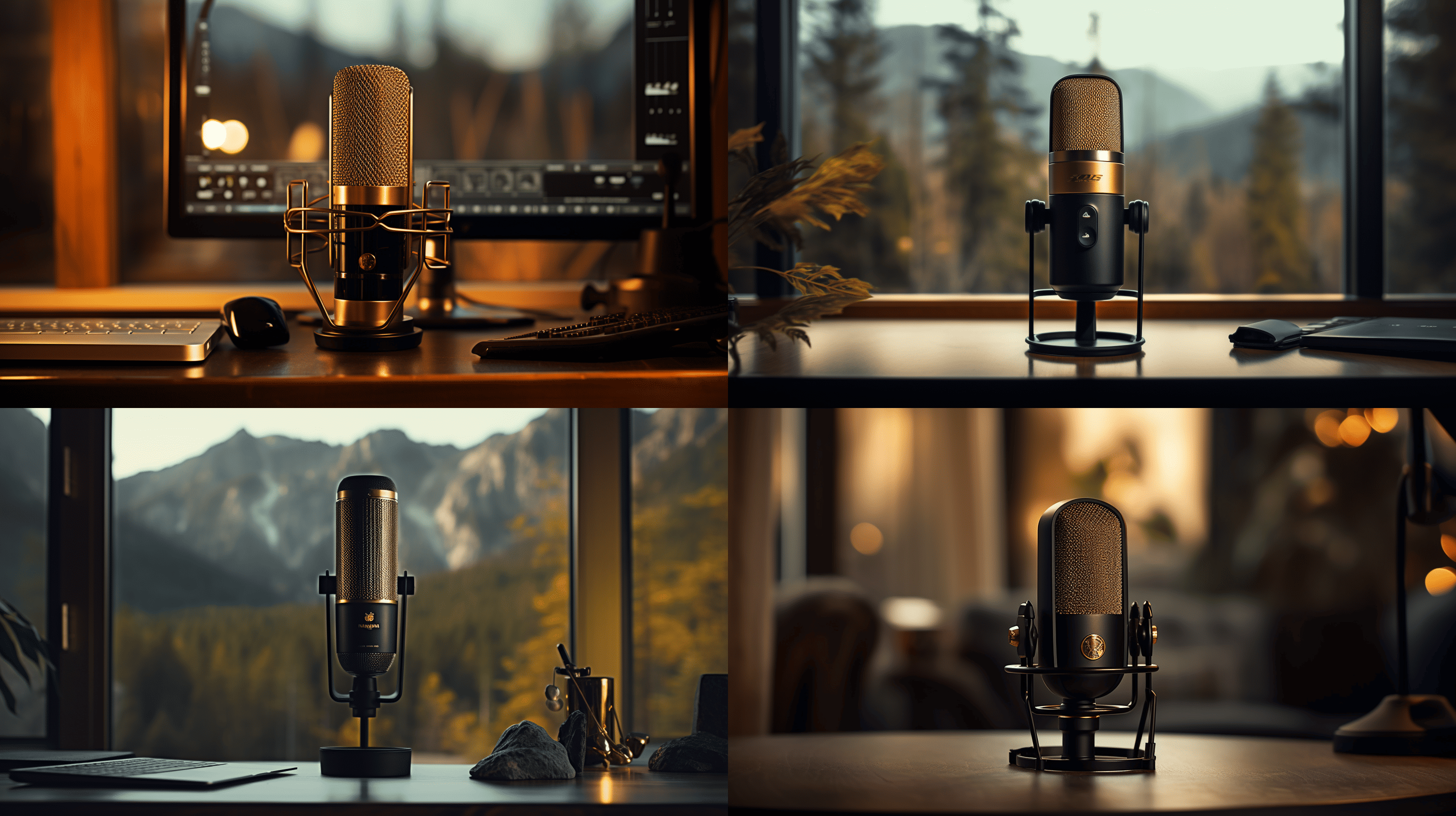
 Microphone2 days ago
Microphone2 days agoUnleash Your Inner Podcaster: Discover the Best Microphone for Crisp, Clear Audio
-

 Music Theory5 days ago
Music Theory5 days agoUnlocking Nature’s Harmony: The Power of 432 Hz Frequency in Sound & Music for Enhanced Living and Well-Being
-

 Sound Design1 week ago
Sound Design1 week agoWhat Is the Difference Between a Sound Engineer and A Sound Designer?
-

 Native Instruments Kontakt5 days ago
Native Instruments Kontakt5 days agoVOCAL AI – Animated Intelligence: The Ultimate Vocal Playground
-

 Sound Design1 week ago
Sound Design1 week agoWhy Sound Engineer
-

 Composing3 days ago
Composing3 days agoMUTILATED NOISE by SampleTraxx: The Next Generation Sound Collection
-

 Expert Guides3 months ago
Expert Guides3 months agoOptimize Your Space with Room Acoustic Treatment
-

 AI Generator3 months ago
AI Generator3 months agoCan Film Cameras Use Any Film?
